To Siberia with Love
…If only before I die, I could witness what I have yet to see,
then I could sleep wrapped in beauty forever…
An Odissi Dance Icecapade at the III International Folklore Festival ‘Northern Rainbow’,
Nyurba, Republic of Sakha (Yakutia), Far East Russia, Siberia invited by Alexandra Borisova the President of Culture Development Foundation of the Peoples of Siberia and the Northern Territories, Moscow, Russia.
25 February – 7 March 2014
Location: Nyurba Village, Tatatinsky District & Yakutsk City
Temperature: -50° Celcius
Venue: Palace of Culture “RRR”, Nyurba
With the support of the Nyurbinsky Municipal District, Republic of Sakha (Yakutia)
https://www.youtube.com/watch?v=29q3yc8BWZg&list=PLZ84g9ij9ayH7IHPAadg3ItZiyVlQmaDq&index=6
(Video of Yakutia by Will Chong)
by Michelle Jueney (Role: Jury Member, Dancer & Masterclass Conductor)
……………
About the International Folklore Festival “Northern Rainbow”,
Nyurba, Republic of Sakha (Yakutia)
The International Folklore Festival “NORTHERN RAINBOW” was founded and created by Alexandra Borisova in 2012 to promote & preserve original folklore of the Republic of Sakha (Yakutia) and to become a cultural center locally and globally without barriers of geographical location, race, age or disability.
The festival is held annually in the month of February in a cultural and landscape National Geographic worthy documentary called Nyurba. The main idea of the festival is to gather in the center of the remote northern town of the best children’s and youth folk groups and individual performers to encourage creativity, performing art skills, identify young talent by an independent international jury and to join an international festival movement of music, dance and theatre.
Every year only three qualified chosen foreign artists are selected to participate as a jury member, to perform at concerts and to give master classes. I am fortunate and privileged to have been apart of this unforgettable unique experience in 2014 this year. The festival winners are rewarded with a generous cash prize, specially crafted custom-made awards and the opportunity to represent their region and to perform at high-level international festivals and cultural events.
Objectives of the Festival
- To develop and strengthen intercultural relations
- To encourage young people’s interest in traditional culture of their people
- To develop creativity, foster respect and understanding of different cultural traditions of various ethnic groups
- To enrich cultures of different nations
- To develop the mastery level of folk groups and teachers, master classes and seminars with the participants of foreign experts
- To source talented teams to participate in cultural activities in the Russian Federation and abroad
- To achieve media coverage
- To strengthen a favorable image of the Republic of Sakha at international level.
Organizing Committee
Festival Director: Alexandra Borisova
Chairman of the Organizing Committee: Arsene Nikolaevich Petrov
Artistic Director: Scriabin Margarita Nikitichna
Coordinator, Nyurba: Sidorova Rimma Ivanvna
Coordinator, Yakutsk: Anna V. Zubarev
Coordinator, Moscow: V. Zakharov Love
Jury Panel
Chairman: Anahit Saribekyan (Armenia)
Members: Michelle Jueney (Malaysia)
Alexandra Borisova
Lyubov Zakharova
Sidorova Rimma Ivanva
Evdokia Pavlova
Nadezhda Permikina
……………
The Destination
Yakutia is a territory in the extreme North of Asia whose cultural history pushes its boundaries as far West as Central Asia and whose cultural legacy reaches as far east as Greenland. Three quarters of the population has made their home scattered across the vast, varied and extreme landscape & beautiful wilderness of Yakutia.
Yakutia is known as the land of diamonds. Mirny is the mining centre of the Diamond Province. De Beers the famous diamond company is from Yakutia. In 1997, Alrosa Co. Ltd was founded where Alrosa Hotel where I stayed is franchised all over Russia.
Remember the mammoth? That beautiful majestic elephant like creature in Ice Age the animated movie? Well, they all originated from Yakutia J
About Nyurba: Sun Granting Life
Religion: The Three Spirits
Main Festival: Ysyakh
“…Eight-sided, on the eight rims,
the six unshakable circles,
Decorated with a magnificent dress,
Enriched with the gold generosity,
Smooth, broad, in bright colours,
With her rising dancing sun,
Soaring above the ground
With the trees shedding leafage,
With the noise of the runaway water,
Full of a squandering abundance,
Full of a replenishing abundance,
Seized with storms –
She was born,
She appeared –
In the ancient times
The Original Mother Earcth…”
By P.A. Oyunsky “Nyurgun Bootur the Swift” (Yakutian heroic epos)
The Schedule
25 Feb 2014: Depart Kuala Lumpur. MH360
26 Feb 2014: Transit Beijing, China. S7 528.
I arrive in Yakutsk International airport at 10am.
I meet Alexandra and we go for Breakfast where I meet Anahit (Chairman Jury Member from Armenia), Alexandra’s sister Valentina, Alexandra’s daughter LyuBov and her husband Ivan.
At around 12pm, we go to a school where I meet other judges Evdokia and Rimma, the Director of the school and school students. We are given time to change to warm clothing and given “untii” boots to wear. We are running late and after an hour we depart to Nyurba by jeep traveling for a total of 14 hours with 5 stops of either meals and bathroom. I had my first experience of an outdoor toilet made of wood parted to two rooms in the deep snow where a medium size hole is dug into the snow filled with yellow popsicles. First thought I had, please do not slip and fall into the hole! When I peed, steam literally emerged from underneath me like a smoke mountain. It was after all -50° Celcius. It took me 3 seconds at first to think whether I could even pull down my pants in this temperature but I had to and it was funnier than I thought. Then I had my first taste of Russian food which to be honest I like. They eat a lot of rice actually, soups like Borshch which is beetroot soup (my favourite),solyanka or shchi and meat and rice in bread. Berry juice is always served with a meal. Meals are small portions but because of the heavy carbo content it fills your stomach to keep you warm. We arrive in Alrosa Hotel at around 3am.
27 Feb 2014: We meet at 8am for the first day of the competition at the Palace of Culture, Nyurba which I will also be performing at night for the Opening Ceremony concert. To be honest, this was my first time judging. It is harder than you think. It is extremely tiring, brains almost felt like exploding and then you have to go back, prepare and perform at night in top shape…I loved every moment of it J After the performance, you do not go back and rest instead we went to a restaurant for dinner which was just for us. It was close to 11pm already. We quickly eat, discuss the marks and competition for the 1st day. I stayed back with the jury panel until 2am in all my make-up. By the time I cleaned, bathed and went to bed it was close to 4am. I wake up 8am the next day for the 2nd day of even more participants. To be honest, I loved each and every dance, act, song and instrument that I was just not bored at all and could not be tired. The energy, effort and heart put into their work was so apparent that it was infectious! Taking photos and meeting all these very enthusiastic children, youth and adults from 6 years to 90 years old was truly heartfelt and memorable. The pace for the 3 days was very fast, we had to move fast, eat fast, travel fast in order to get from A to B.
28 Feb 2014: First round of Masterclasses by Anahit and I at a school nearby where I meet the Director and Anatoli, a charismatic family man with a gentle and warm nature, our translator who speaks Spanish, English, Russian and Yakutian who is also a school teacher from the Village of Eloja. Alexandra who speaks fluent English translates most things for me as I am with her more while Anatoli follows Will Chong, the videographer I brought along to film the trip. After the classes we continue the judging for the competition. We ended the day pretty late but this time ate in the office upstairs at the Palace of Culture to save time as we have to go through the total of scores to announce the winners for final round of competition the next day.
1 March 2014: Second round of Masterclasses, judging and performance for the Closing Ceremony and Awards Ceremony. I have no idea what time it ended and what time I slept but it was probably early morning but we got to sleep it the next day. I woke up at 10am.
2 March 2014: Now this was an amazing day! We depart for a few hours drive to meet the Alexander Ivanic the Mayor of Jaarkhan in his own home where I was given a hand-made traditional puppet, a coron which I will treasure for life as a welcoming gift and the feast of a lifetime that awaited me. Before this was a greeting of Koumiss, cleansing ceremony and Oladyias before entering new ground. Now the feast of delicacies! There on the table was a totally of least 15 dishes including dips. Horse was the delicacy. My first! Note: Almost every part of the horse is used and not gone to waste not necessarily to eat but the hair of the horse for ritual ceremonies, ornaments, clothes to name a few. Even the blood and outer skin of intestines is used to make blood sausages.
Salamat – Millet porridge with butter and horse fat
Briparkh- Cow milk with sugar and butter mixed together
Smetana- Sourcream
Lapiska – Pastry bread
Reobret – Ribs of the horse
Haan– National horse blood sausage wrapped in horse skin intestines with spices
Hatah – Horse stomach
Pechen – Horse liver
Pike- A very long eel like fish stuff with carrots, onions, spices and then minced and baked in its actual form then sliced to round pieces when served
Soboh- Palm size roundish fish from the lake with little meat but entire stomach of roe. This was my favourite fish.
Indigirka- Fish salad
I can’t remember all the names but pickled salad and stewed cabbage was also served.
Then we were stuffed like a very big ‘pao’ as we were going Siberian horse riding and ice fishing. The vast landscapes were so breathtaking and I could not believe that I was going to sit on a sleigh and see up close Siberian horse. They are scattered everywhere so you might only see a few in a very big vast landscape after hours of traveling. I once saw three behind an Izbuhska’s (house) and they were only 6 feet away from me, head half ducked into the snow eating grass underneath it. Once we saw around 10 crossing the road, one slipped on the slippery road, they all stopped and waited for the one to wobbly get up then they walked together again. It was incredible!
Then the ice fishing was indescribable. With bare hands of steel, the fishermen use long sticks to slice through the ice, then shovel them away to reveal a round hole. With their hands of steel, they slowly collect the net to check for fish every 2 days. They perform this difficult act fast as the ice slush will freeze again and then they can’t check for fish. Sometimes Canadian water rats get stuck in the net cages and their fur is sold. One Canadian rat is the size of a cat! A very big Ratattouie! We then head back to the Mayor’s house and eat again before returning to Alrosa to leave for Yakutsk city.
3 & 4 March 2014: We travel for another 17 or 18 hours and arrive at 6am at Sosnovy Bor where we stayed. Ivan joins us here. I am told I have 45 minutes to get ready before we go to the TV Station where I will be interviewed. I did not sleep in the jeep on the way only 3 hours. I was in a very hyper mode and listened to my iShuffle most of the way. I get ready and we reach on the dot 7am where the popular TV Program New Day had already started. I meet Leonid Antsiferov who will be interviewing me with Anna Kirillina and they were both very nice. He came up to me before the show to tell me what sort of questions he was going to ask me and Alexandra being the professional listened to my answers and when I spoke to long, they would say cut short. I was to end the show with my dance J We have breakfast and a journalist from Sosnovy Bor interviews Will, Anahit and I. I go outside quickly to take some photos with Will and enjoy the snow before I bathe and clean. At this point I am very tired and sleep for 1 hour before we go to the Mammoth Museum and the Museum of Folklore and Music whose Director is Zhirkov Nikolai where I got to try to play the Khomus J We then visit the outdoor fish market. This is an experience you must see! The fish are frozen they can stand on their tails! They are almost ¾ my height and huge. The price of fish is so reasonable in Yakutia. A salmon is 3 inches thick, almost the same size as a human’s face and cost only RM60. I have never seen so many amazing huge and big fish in a market like this and the people sell fish in the open extreme cold all day. I would have turned into one of the frozen fish! I did not feel like having dinner as I had 2 Masterclasses to conduct. 2 hours each. I ended close to 11am and we go for Sushi. Sushi is a favourite amongst Russians and you see Japanese restaurants everywhere. It was also on the menu on the way to Nyurba in the remote village stopover cafes.
5 March 2014: We depart early to Ytyk-Kyuel settlement of Tatiinsky District. On the way we pick up Saina, the winner of the folk instrument category, the Khomus player of 11 years old that will also be performing with the rest of the winners and judges for our last show at the “Centre of Leisure and Ethno Culture” the first theatre established 55 years ago in Yakutia which is also called the people’s theatre, for the Department of Culture and Spiritual Development of Tattinsky ulus, Republic of Sakha (Yakutia). Before that we are once again greeted with the cleansing ceremony and Koumiss which I gladly receive and Oladyias and fresh berry puree and cream at the Tattinsky Region Adminstration Centre. At 3pm I literally had to lie down for an hour and half before I got ready for the last performance of this trip. And all the deserving winners were there with us for one final bow J We later drive and arrive fairly late a family owned hotel and wake up at 8am the next morning for the long drive back to Yakutsk where we arrive around 3 ish.
6 March 2014: Ivan has been graciously driving us for the last 3 days and giving us special breakfast treats in the jeep his mother makes. We depart to the ‘Old City’ of Yakutsk which was so quaint and beautiful of wooden converted houses into souvenier shops that I got carried away with window shopping. We then go for dinner where I meet Alexandra’s two sisters and we have another delicious dinner. This time the menu was:
Stroganina- Frozen fresh Arctic river fishes
& hot plate reindeer meat
Kuerchekh- Mare milk with various berries for dessert
We took more photos before the airport. The flight got delayed but we made it back to Kuala lumpur. But I think I left a piece of my me in Yakutia. Somewhere in all of this,we also crossed the frozen River Lena where they dug the snow to make a snow road for cars to drive across. Somewhere in this, we crossed the frozen River Lena for 27 mins at 50km/h where the dug the snow to make a snow road so cars could drive across and we took photos naturally 🙂
Celestial Dancers
As described in Olonkho bittisity from the ancient epos – dancing celestial children who accompany the great shaman are like birds in a wedge that follow their leader. Faces fastened to the rising sun and they hold birchen branches in their hands. Shaman invokes the aiyy gods and the chanting of prayers begin to mark the beginning of Ysyakh.
Ancient Yakut dances which have passed on to our times, are very different in movement, rhythm and costume. However, they are united by one character, nature. In one, boys portray horses galloping, in another young girls spin like Siberian white cranes. During the III International Folklore Festival, the creativity of young children mimicking seals, reindeers and some using dance to express rituals of becoming a woman, marriage, daily life of playing with sticks, ropes and leaves was refreshing and magnificant! During Ysyakh, ritual dances are their way to cleanse evil spirits. If white birds appear at the time of the dance, it is believed the celebration is especially successful.
The circle dance of osuohay is a symbol of a complete circle of life. This dance was recorded in the World Guinness Book of Records as the longest dancing circle of over 1000 participants. The dancers move with the sun, thus traveling through time and space. By joining their hands the dancers pass positive energy from one to another.
What is Olonkho?
The heroic epic tale Olonkho is based on numerous ancient tales of the Yakuts narrating how famous folk heroes struggle and defeat monsters. Researchers believe the Olonkho to have emerged by VI-VII centuries A.C. or even earlier. Therefore, the Olonkho is regarded as one of the world’s most ancient works in literature.
The storytellers are of great honour studying under pupilage for many years. While telling Olonkho, the olonkhosut interchanges reading and singing. He recites the descriptives and narrative parts at a quick pace and sings the monologues and dialougues. Crossing his legs, the storyteller holds on his cheek or ear. The most passionate parts and feelings of the characters are emphasized by the gesture and mime of the olonkhosut.
Kuldus Bege is an Olonkho story about the conflict of good and evil which narrates the struggle between the epical heroes of the Upper and Lower worlds. This is expressed beautifully in a dance which ends in victory of life-asserting light forces.
What is Ysyakh?
Ysyakh is the main festival of Sakha. It is established and well known as a global heritage. The origins of the summer celebrations go back for generations. For several thousand years, Yakut ancestors have been arranging annual immense performances dedicated to the Gods. However, this unique tradition was almost lost in the 18th-20th centuries. Ceremonies and spells were forgotten and the meaning of service ritual was erased from memory. During the last years of the Republic of Sakha (Yakutia) has been dedicated not only to breathe new life into Ysyakh tradition but to include this ritual into the list of worldwide UNESCO cultural heritage.
Ysakh holiday is dedicated to three principles, the celestial aiyy protectors, the ichchi spirits or nature and to the people. Young and old will gather and refresh their memory of the yakut generation, recall old legends and legacy of their forefathers. The Yakut’s grandparents reaffirm that the world rests on three virtues: wisdom, love and goodness. I conquer!
“…The warm hearted people
With sunlight reins behind their backs…”
Not only regional authorities, media personalities and public figures are involved in bringing the traditions back but the whole nation. In every town and village, there are people choosing a friendly and constructive way of self-identification by reviving their own culture. The people find progress and development by going back to their roots. Each new breathe of life into Ysyakh, the nation takes one step into the future.
“…Oh, motherland, my dear ulus
All people seemed as if the pick of the bunch…”
The tradition of ancient Ysakh is being restored not only in the capital of the republic and the cities but everywhere. Ancestor’s rites are being observed in the remote uluses just as thoroughly as in Yakutsk, the main city. The heart and home of Ysyakh revival has become Nyurba, where people celebrate under ancient canons. This is an annual event people look forward to, taking out the silver adornments, making traditional costumes preparation of song and dance. Owing to these thorough preparations Ysyakh 2012 in Nyurba became special marking a national record in the longest osuokhay: the participants singing and dancing for more than an hour.
“…With the rising and dancing sun, that flies up above the earth,
Engendered and appeared it- in the year one – the initial earth Mother…”
The ancestors believe that the light from the rising sun on the Ysyakh holiday could heal their body and strengthen their spirit, wash away the sins and nourish the body with renewed energy. The term ‘tired of civilization’ is the new meaning for modern men. People see the way of returning to nature through the ancient ritual as the ability of harmonize with nature and the way forward.
“…Seven days without a break, without interruption,
They celebrated abundant Ysyakh…”
All the living – gods, spirits and men are joined together during this celebration. Thanksgiving prayers to the Supreme divinities aiyy come down from the sky to bless dancers and the people. The people sing songs, perform their traditional dances late at night then watch the sunrise together.
“…The great shaman sang the wassail,
And the majestic udagan told the benedicton…”
During this festival, the men will set up a sacral column covered by oil, it helps to communicate with the spirits and divinities. The main performer will begin the ceremonial song – the algys benediction and splashes koumiss over the fire to feast the divinities.
There are traditional sports meetings during the Ysyakh. Young people compete in marksmanship in archery, ability to duck from flying arrows and demonstrate skill and mastership in combat weaponry like the javelin, palma long knife or sharp batas. Tug of stick is a Yakut traditional challenge that you won’t see in other cultures. Description of this combat sport can be traced in ancient tales and legends of the Sakha people. Two men sit facing each other bearing their feet against a wooden bar to wrestle the stick out of the opponent’s hand by pulling the stick to your side of the bar. This local sport was also included in the Russian Championships.
Untold Wealth
The Sakha’s people’s beliefs were born from the cult worshipping of nature. Mighty Siberian forests full of game and berries. Noisy deep rivers always supplied the people with fish. (The fish was such a favourite to me that the hosts and people were so gracious and sensitive, they always made sure there was fish on the meal table. Rich with roe and high in minerals, Siberian fish is succulent and very delicious not to forget healthy.) Lush green pastures gave food for cattle. Nature has been nothing short of beautiful and majestic and the people have been trying to give thanks to the divine powers for these wonderful gifts since the dawn of time.
White Divinity
The cult of horses is the most significant in the traditional Yakut culture. Most often it is an image of a white stallion as their major God that was later joined with the Sun afterwards. The horse is like a right hand in everyday life and reliable comrade in battles for the people of Sakha. Horses help Yakut people survive and bear the severe climate of the Far North. The horse is both a measure of abundance, possibility of traveling, and a winter without hunger. The horses are praised during Ysyakh for their allegiance and are the most important and honourable participants of this holiday of the sun. And in the myths and legends the movement of the sun across the sky is actually the horse’s run. According to ancient Yakut legend, God created the horse first, then only man. That is why the horse is the rightful heroes in legends and tales. It is even idealized that horses can ride faster then the wind, can fly and speak with a human voice.
The Choron (Goblet) and Koumiss (Horse Milk)
I was greeted by koumiss (horse milk which is extremely expensive and difficult to get in comparison to cow’s milk) in a beautiful goblet with a tray of ample boulinis (Russian mini pancakes) when one visits new territory as a cleansing ritual before entering new ground. The stranger is blessed with a tray of smoked leaves and twigs by moving one’s hand in a circle around the person’s face three times. This is multiplied indoors with a feast beyond your imagination of fresh cream, berry puree, more oladyia (small bellinis), Russian waffles, Koumiss & fish!
During Ysyakh, many ritual objects are adorned with some elements similar to horse’s head or hooves. For example, wooden cups for koumiss are traditionally placed on three legs of the horse. Facing the summer sunrise, the shaman addresses the Gods, patrons of the cattle. The choron is used to feast the spirits by splashing koumiss upon fire and the four cardinal directions. The symbolism of this ritual represents fertilization of nature and beginning of new life. After reading the conjurations the audience drinks the koumiss.
The Khomus – The Melody of Nature
The khomus is Yakutia’s national instrument whose sound is dense and rich. The reed of the instrument generates vibrations. The sacrament of a khomus manufacturer is preserved with the passing of knowledge and observing of customs passed on from generation to generation. It is considered that the soul of the Master and his own nature when crafting the instrument strongly influences the sound of the instrument.
My Personal Feelings & Obeservations
- I could not help but notice especially since I am an Indian Classical dancer the few similarities between Yakutian culture and Indian way of life. For example, the greeting of the cleansing ceremony when one visits new territory before entering new ground where I was blessed with a tray of smoked leaves and twigs by moving one’s hand in a circle around the person’s face three times is similar to the Indian culture of cleansing or for good blessing before a journey or experience where smoked camphor, flowers and sweets are placed on a silver tray and moved three times around a family or friends face before leaving the home and during weddings, rituals and ceremonies.
- Yakutians grew up watching Bollywood and Indian films and TV series because the government believed that the positive nature of song and dance elements are important for the nation’s moral. Yakutians are always bright, warm and cheerful especially when you tell them you are an Indian Classical dancer. Their faces literally light up into a smile and they start to show the movements and want to converse with you in delight. It was fantastic!
- Yakutians love to sing especially during meals. Even in restaurants they break into song with laughter and happiness. The element of singing and sharing a meal with plentiful people and food is a great joy. Even watching and listening to them was wonderful.
- Another unintended observation was the similarity in the costume and dance form of Yakutians and Indian Classical Dance whereby in the south, the girls always wears dresses when they perform which is the same as BarataNatyam costume of the skirt and in the north, the women wears trousers like the men where the dance is a lot more vigorous which is like Odissi which originates in the north east of India. The movements of the southern dances of Yakutia is straight and angular while the northern dances moves in waves and ‘S’ like shapes exactly like Odissi where the body curves and bends and motions are circular rather angular. This was very shocking observation to me after 3 full days of non-stop judging a total of 150 contestants of 2 rounds per individual or group that came from every region, near and far for the III International Folklore Festival.
- Yakutians offer oladyias at the foot of trees and at ‘gates’. These gates are designed for sun salutations – one of the main attributes of the Ysakh. These gates are placed in a way that catches the first ray of light on the day of the summer solstice. The gates are facing the altar where sacred rituals are performed. Every entrance of a new village has a specially designed gate. The food offering is a gesture of respect to divine Mother Earth and for good blessings. Wishing ribbons are also tied to long twisted threads, which are tied to trees. When I was greeted in new places, I was offered to tie ribbons on the thread and make a wish.
- Each Khomus is different in sound from onether which I experienced when playing different khomuses at the Official Khomus Museum. Some were deep, some were high pitched, some were light. The metal for some also was easier to play. The Master that created a Khomus really influences the instrument as he makes it.
- A Yakutian child’s smile is like hot chocalate with a lot of cream and candyJ They have pink cheeks and sparkly twinkly eyes. They are quiet but enthusiastic and very talented for their age all being able to either sing, dance, recite Olonkho, act or play an instrument. Some do all! The Grand Prix winners were an example and they were all 7- 8 years old.
- The children and people of Yakutia are unique. They are soaked in very deep rooted culture the day they are born. Almost all the young know of local folk song, dance and play the instrument of the ‘Homus’. They are a unique breed of people that have to be treasured, revered and preserved. They are a living symbol of sacred unity, guardians of culture and of the higher arts. In short a UNESCO global heritage.
- Hexagon shaped houses are called Curakcha and tent houses are called Yurta.
- Alexandra Borisova is an incredible woman and I would like to thank her and her family and the people of Yakutia for their unforgettable warmth, hospitality and generosity. This has truly been a rare and privileged life experience. Alexandra Thank You!
About Alexandra Borisova
Alexandra Borisova’s was born in Nyurba. She started out as a TV & Radio journalist and in the 1990-s worked as an interpreter for a marketing company in the Republic of Sakha (Yakutia). In 1997, she then worked for the United Nations Development Program as a Liaison Officer for the Republic of Sakha (Yakutia) and had several tenures with UNDP, UNFPA and TEMPUS/TACIS in Moscow. Amongst the projects she worked on was to organize logistics for the 4th RBEC HIV/AIDS Community. Alexandra has strong interest in office management, project coordination and travel. In 2003 she set up her own travel business and in 2010 finally decided to establish the Culture Development Foundation of the Peoples of Siberia and the Far East “Northern Rainbow” in the efforts to promote and get resources to support the northern peoples culture development, preservation and popularization. Alexandra Borisova’s goal is to bring the culture of Siberia and the Far East to other nations and countries worldwide.
About Anahit Saribekyan
Anahit Saribekyan is both a singer and a dancer. In 1998, she graduated with honors in Dance from the Vanadzor School of Arts in Armenia. In 2008, she graduated from Nizhy Novgorod State Pedagogical University. During her studies at the university she formed her Armenian ensemble called Nairi. Her ensemble consists of different nationalities. She has produced and participated in more than 40 productions using her own abstract monumental dance style which is a combination of Armenian national movements together with New World Vision genre of music. In 2012 Anahit joined the International Dance Counceil UNESCO and in 2013 was appointed the President of Vanadzor (Armenian section) CID UNESCO. In 2012, Anahit became the Chairman Judge for the II International Folklore Festival and in the same year she was invited by the National Dance Theatre Dora Stratu, Athens, Greece to conduct a comparative study between Armenian and Greek folk dance. Anahit is also the first artist to develope an Armenian ‘hands technique’ which is uniquely hers. As a vocalist, Anahit sings Armenian and Russian folk songs and works in different genres in the music industry.
About Will Chong
For all information about Will Chong, please visit 321Proproject on Facebook.




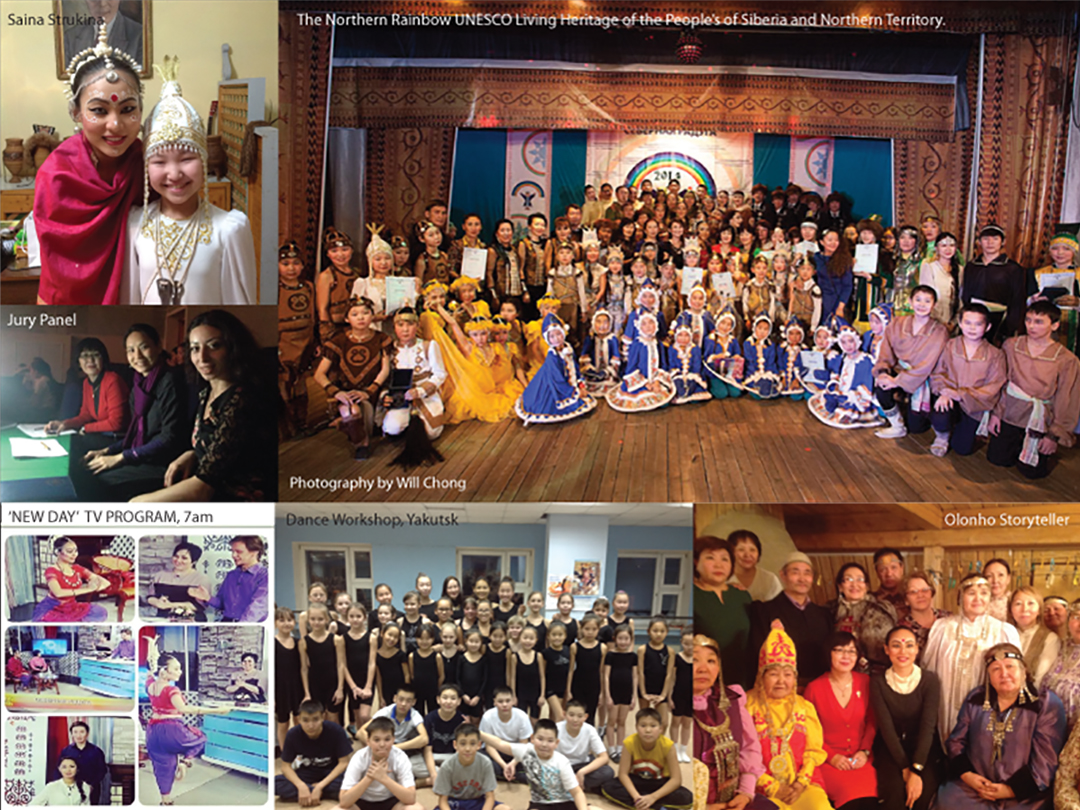
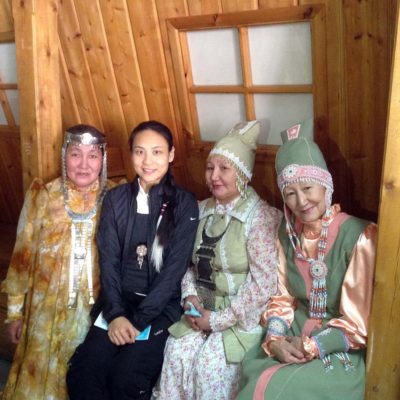




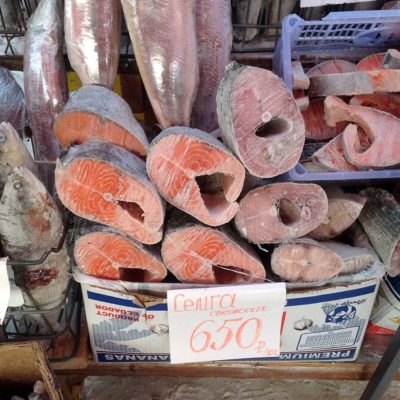

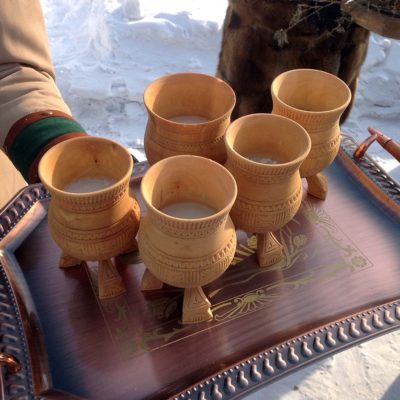







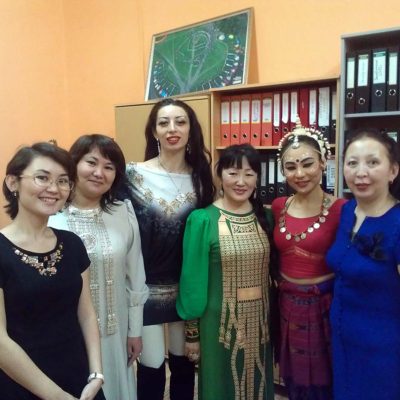


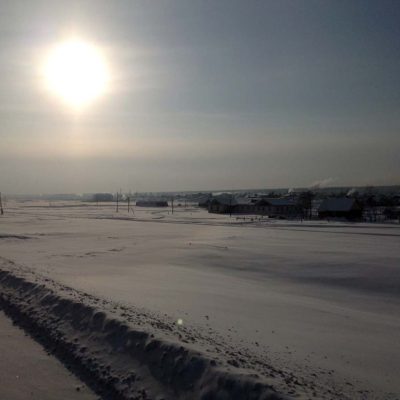










Sorry, the comment form is closed at this time.